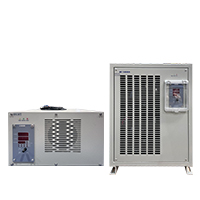Anodizing gives aluminum a tougher, more corrosion-resistant surface using an electrochemical method.
Anodizing Process:
Aluminum workpiece → Mechanical polishing → Degreasing → Water rinse → Neutralization → Water rinse → Chemical or electrochemical polishing → Water rinse → Anodizing → Water rinse → Deionized water rinse → Dyeing or electrolytic coloring → Water rinse → Deionized water rinse → Sealing → Water rinse → Mechanical brightening

Degreasing
Removes oil from the aluminum surface. A clean surface is needed for proper etching.
Alkaline Etching
Removes the natural oxide layer and any surface dirt. Also helps remove extrusion marks and adjusts the surface finish.
Neutralization
Washes off remaining alkali and neutralizes the surface. Prevents further reaction and leaves the surface clean.
Electrolytic Polishing
Uses current to dissolve rough spots on the surface. The result is a flat, bright finish.
Dyeing
The part is placed in a dye bath. Color enters the pores of the oxide layer.
Sealing
The part is boiled in water or near-boiling water. This closes the pores and fixes the color.




